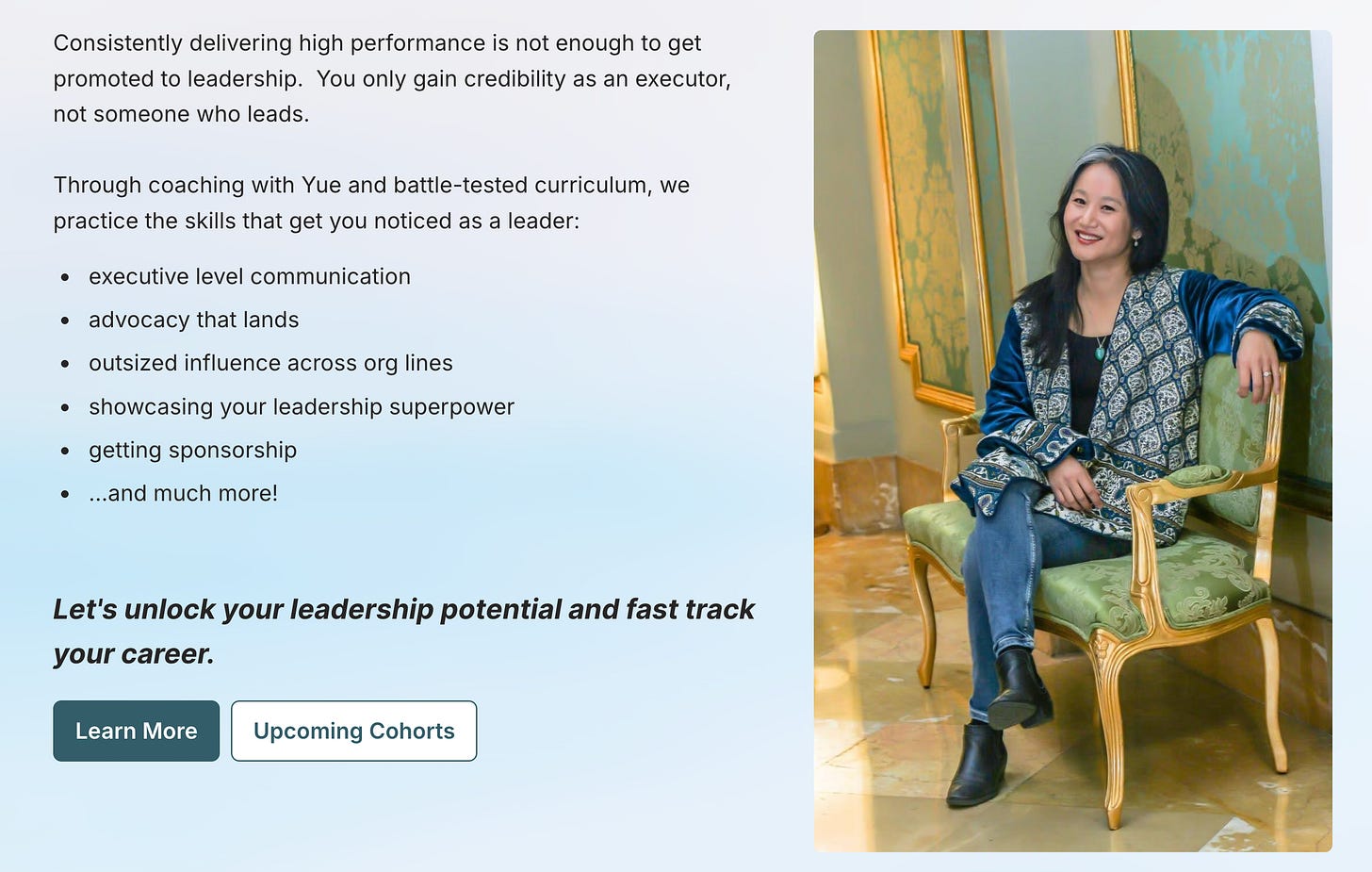How To Influence Executives: 5 Elements of Persuasive Stories
While we think we're data-driven and logical, we are much more influenced by stories than numbers. Hone your storytelling skills to unlock a next level influence in your organization.
Client: I have prepared so much analysis and data to back up my recommended approach. I’m confident it’ll work and be super impactful. However, when I raise this approach with the stakeholders and walk them through the numbers, I see their eyes glaze over. The change in the model is very technical and complex, and I can see that they’re not getting it. What can I do?
As we move up the career ladder, we exit a place of facts, certainty, and known issues and enter a world of wild complexity, risks, and unknowable unknowns. In this world, there are few right answers and mostly debates about what may be the “better” option. There are a few unshakable truths and mostly subjective gut calls. At the senior leadership levels, most people consider the data but then rely on their “years of experience” and gut instinct to make the decision. When dealing with such ambiguity and uncertainty, stories are often the more powerful tool for persuasion.
The Science of Stories
Human beings are primed to respond to stories. It is how we built culture and societies for thousands of years. Stories help us not only remember information but also persuade and influence others. Notable cognitive and social psychology experiments show that when participants read statistical evidence about cancer survival rates versus read a vivid personal narrative, the story was much more persuasive to convince patients to seek treatment (Melanie Green et al., 2006).
Facts activate the areas of the brain associated with language. Well-told stories will light up many more areas, from sensory to memory to emotional. Surprise or suspense in a story triggers dopamine release, keeping us “hooked” until a resolution, and motivates us to learn. Emotions in a story trigger our mirror neurons and release oxytocin, which makes people more generous and willing to act. Finally, a structured narrative creates links in our brain between disparate parts, improving future recall and memory.
How Famous Leaders Use Stories
Silicon Valley is a land of visionaries. And consequently, great stories. Here are some of my personal favorites that showcase how great storytelling allows leaders to inspire, persuade, and scale.
Inspiration
To inspire employees, Stripe’s founders told stories about how Stripe helps small businesses win against the big guys. One story is about Bookshop.org and helping small, independent bookstores survive the Amazon era. Another is about BloomNation, and how Stripe helped local florists compete with big-box delivery services. These narratives position Stripe not as a platform or infrastructure company, but as an enabler of entrepreneurship, creativity, and new economies.
Persuasion
Drew Houston, founder of Dropbox, told the origin story of Dropbox to persuade investors to fund Dropbox and sign up thousands to the waitlist before the product existed.
In 2007, Drew was on the bus commuting when he realized that he had forgotten the USB flash drive with his presentation. Frustrated, he thought: “Why isn’t there a way to have my files available anywhere without carrying hardware around?” That frustration became the seed for Dropbox: a simple, cloud-based folder that “just works” across devices.
The story is simple, emotional, and persuasive. It explained the user problem succinctly and tangibly, and outlined an enticing, elegant solution.
Scale
Stories around company values help leaders scale an effective culture across geographies, functions, and organizational lines. Stories help translate an abstract concept of values into practical guidelines for decision-making and action. Here is one of my favorite examples:
In the very early days of Amazon (1995), Jeff Bezos needed desks for his small team. Instead of buying office desks, he purchased wooden doors and lumber legs at Home Depot to make door desks. This story became an illustration of Amazon’s core value: Frugality: Accomplish more with less.
5 Elements of a Persuasive Story
Most persuasive stories follow a similar narrative arc. It engages many different areas of the brain and triggers oxytocin and dopamine release. When writing your story to persuade, try starting with the following structure:
Open with a hook: What is surprising and unconventional about your story?
Introduce conflict: What was the current state, and what went wrong? What didn’t go as planned?
Build emotional connection through struggle: Dive deep into the emotions of uncertainty, stress, pain, fear, and anxiety.
Create hope with change: What’s the new world of possibility? What shifted? How is the new world easier, lighter, and better?
Close with action: What should people do now? What’s the next step?
These 5 simple steps allow you to create a story that brings listeners along, triggers emotions and empathy, and creates buy-in for change. In the client’s example, he started his presentation with a story about a customer’s experience with the product after the new model was implemented. The project got funded the next quarter and is on track to become one of the top-performing business lines at the company.
That’s all folks! See you next week at 3:14 pm.
Yue
Yue’s Coaching Corner
Now enrolling for January: The Uncommon Executive Leadership Accelerator for managers and senior leaders! The 8-week program combines time-tested curriculum, group coaching, and community to support aspiring executives to transform from “high-performer” to “inspirational leader”. Learn more and apply here.



“I have prepared so much analysis and data to back up my recommended approach. I’m confident it’ll work and be super impactful. However, when I raise this approach with the stakeholders and walk them through the numbers, I see their eyes glaze over.”
I remember this feeling .. and trying to work out how to step through the next door…. And even where the door to the next level was.
Communication and story telling was a big part of unlocking the next level for me. Thanks Yue, I wish I had this article back then :)